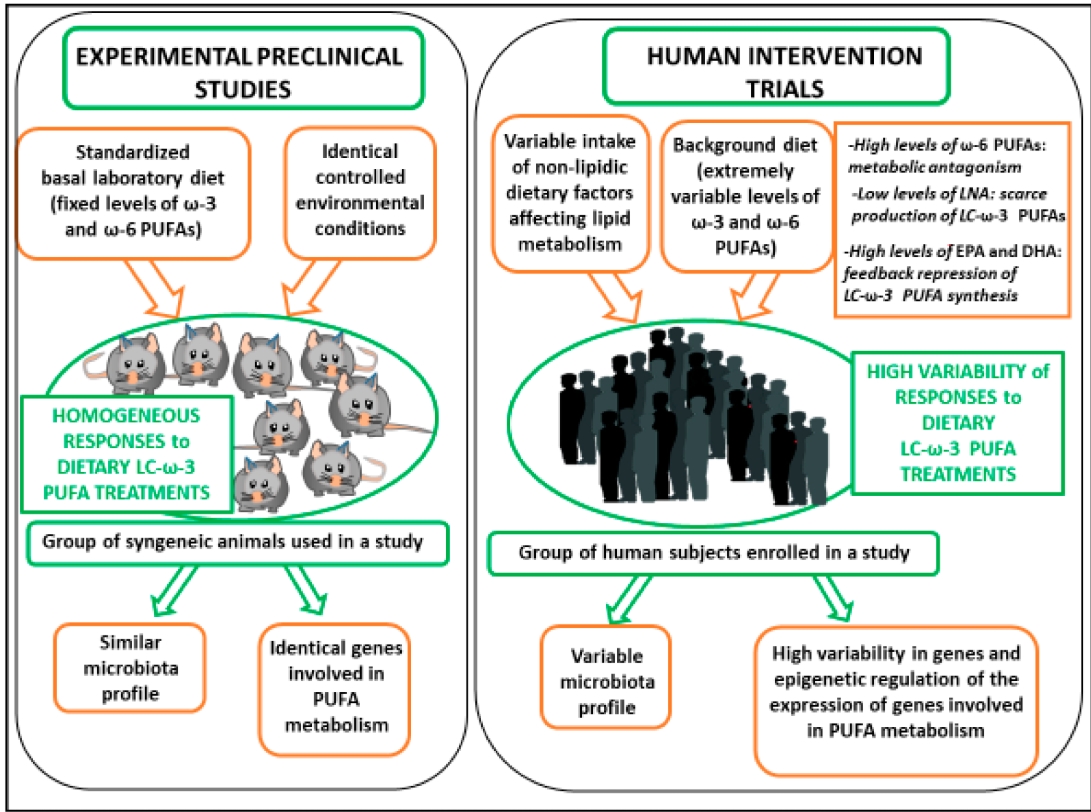Omega-3 PUFA Responders and Non-Responders and the Prevention of Lipid Dysmetabolism and Related Diseases
by Simona Serini Nutrients 2020, 12(5), 1363;
The long-chain omega-3 polyunsaturated fatty acids (LC-omega-3 PUFAs) eicosapentaenoic acid and docosahexaenoic acid are the most popular dietary supplements recommended for the prevention/management of lipid dysmetabolisms and related diseases. However, remarkable inconsistencies exist among the outcomes of the human intervention studies in this field, which contrast with the impressive homogeneity of positive results of most of the preclinical studies.
In the present review, we will firstly examine a series of factors—such as background diet composition, gut microbiota and genetic/epigenetic variants, which may lie beneath these inconsistencies. Moreover, we will discuss the recent advance in the knowledge of possible specific biomarkers (genetic-, epigenetic- and microbiota-related) that are being investigated with the goal to apply them in a personalized supplementation with omega-3 PUFAs. We will also consider the possibility of using already available parameters (Omega-3 index, Omega-6 PUFA/Omega-3 PUFA ratio) able to predict the individual responsiveness to these fatty acids and will discuss the optimal timing for their use. Finally, we will critically examine the results of those human studies that have already adopted the distinction of the subjects into omega-3 PUFA responders and non-responders and will discuss the advantage of using such an approach














